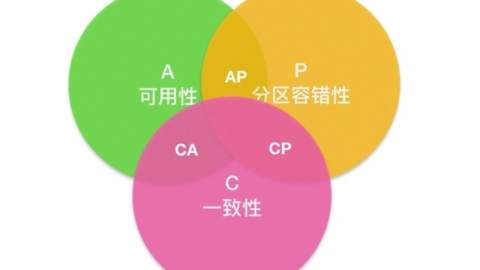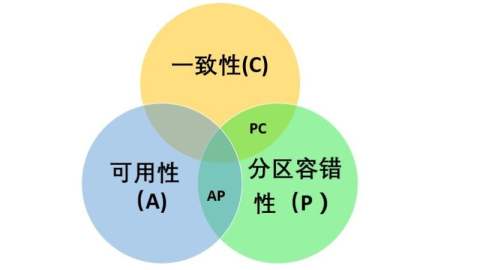转载声明:文章来源https://blog.csdn.net/yangyan19870319/article/details/6202403
相信好多人对java初始化问题一直存有疑惑,下面是我看到的比较详细的java初始化问题讲解
一 java初始化基础知识
1、 一个类的所有基本类型数据成员都会保证获得一个初始值。
非基本类型,会初始化为null
public class Initialization {
int a;
char b;
short s;
float f;
long lo;
double dou;
byte e;
boolean flag;
Object obj;
public static void main(String [] args){
Initialization init = new Initialization();
init.print();
}
public void print(){
System.out.println("int a="+a+"/nchar b="+b+" /n"+" short s="+s+"/n float f="+f+"/n long lo="+lo+"/n double dou="+dou+"/n byte e="+e+"/n boolean flag="+flag+"/n Object obj="+obj);
}出来结果为
int a=0
char b=
short s=0
float f=0.0
long lo=0
double dou=0.0
byte e=0
boolean flag=false
Object obj=null可见,java会为类的基本类型的变量提供一个初始值,各类型初始值不同,非基本类型初始为null。注意,这里的变量必须是类变量,注意,只会为类变量提供初始化,而局部变量不会。如果局部变量没有初始化,会收到一个出错信息
2、可以通过构造方法或其他方法进行初始化,但是不会妨碍java默认的初始化
看下面的例子
int i;
Object obj;
public Initialization(){
System.out.println("before i="+i+" obj="+obj);
i = 1;
obj = new Object();
System.out.println("after i="+i+" obj="+obj);
}
public static void main(String [] args){
Initialization init = new Initialization();
}输出结果为
before i=0 obj=null
after i=1 obj=java.lang.Object@de6ced由此可见,不论是基本类型,还是其他的类。java默认的初始化是最先发生的,位于一切方法之前。
3、static 数据的初始化
static 数据会发生上述同样的事情(基本类型,获得对应基本类型的初始化值;非基本类型,初始化为null)
但是,由于static值只有一个存储区域,所以static值只会被初始化一次,看下面的例子
public static void main(String [] args){
Cupboard cup = new Cupboard();
cup = new Cupboard();
}
public class Cupboard {
static Bowl bowl = new Bowl();
public Cupboard(){
System.out.println("initialization Cupboard");
}
}
public class Bowl {
public Bowl(){
System.out.println("init ing Bowl~");
}
}输出结果如下
init ing Bowl~
initialization Cupboard
initialization Cupboard所以说,static数据只会在第一次进行初始化,之后就不会了。
4、初始化顺序
在一个类中,无论变量的定义是在方法之前还是方法之后,都会在方法之前进行初始化的; 另外,static数据初始化位于非static数据初始化之前
来看下边的例子
public static void main(String [] args){
Cupboard cup = new Cupboard();
}
public class Cupboard {
Pan pan = new Pan();
public Cupboard(){
System.out.println("initialization Cupboard");
}
static Bowl bowl = new Bowl();
}
public class Bowl {
public Bowl(){
System.out.println("init ing Bowl~");
}
}
public class Pan {
public Pan(){
System.out.println("initialization Pan");
}
}结果如下
init ing Bowl~
initialization Pan
initialization Cupboard5、静态块
静态块里的变量初始化顺序位于普通变量之前,和static变量相比,则是完全由定义的顺序来决定了。另外,静态块里的变量也是只初始化一次,这点和static变量一致。示例如下
public class Other {
static{
Bowl bowl2 = new Bowl(2);
}
static Bowl bowl = new Bowl(1);
private Bowl bowl3 = new Bowl(3);
public static void main(String [] args){
Other other = new Other();
other = new Other();
}
}
public class Bowl {
public Bowl(){
System.out.println("init ing Bowl~");
}
public Bowl(int i){
System.out.println("init ing Bowl"+i);
}
}输出结果为
init ing Bowl2
init ing Bowl1
init ing Bowl3
init ing Bowl3如果调换static变量和静态块的位置,输出结果如下
init ing Bowl1
init ing Bowl2
init ing Bowl3
init ing Bowl36、涉及到继承时 初始化顺序
初始化时,如果有static变量或静态块,其初始化顺序是位于最前面的,无论变量位于子类还是父类中,它们二者之间的顺序,可参见第5点; static变量初始完了后,先初始化父类,然后是子类。
示例如下
public class Base {
Bowl bowl = new Bowl(1);
public Base(){
System.out.println("initialization Class Base");
}
static Bowl bowl5 = new Bowl(5);
static{
Bowl bowl6 = new Bowl(6);
}
}
public class Sub extends Base {
Bowl bow2 = new Bowl(2);
public Sub(){
System.out.println("initialize Sub");
}
static Bowl bowl3 = new Bowl(3);
static{
Bowl bowl4 = new Bowl(4);
}
}
public class Test {
public static void main(String []args){
Sub sub = new Sub();
}
}输出结果如下
init ing Bowl5
init ing Bowl6
init ing Bowl3
init ing Bowl4
init ing Bowl1
initialization Class Base
init ing Bowl2
initialize Sub二 问题举例
package test;
class Singleton {
private static Singleton obj = new Singleton();
public static int counter1;
public static int counter2 = 0;
private Singleton() {
counter1++;
counter2++;
}
public static Singleton getInstance() {
return obj;
}
}
public class MyMain {
public static void main(String[] args) {
Singleton obj = Singleton.getInstance();
System.out.println("obj.counter1=="+obj.counter1);
System.out.println("obj.counter2=="+obj.counter2);
}
} 这段程序代码输出,实际运行结果:
obj.counter1==1
obj.counter2==0
相信大家跟我一样会对这个结果存有疑问,这段代码中尤其注意:private static Singleton obj = new Singleton(); 在类Singleton中的位置,改变位置会有不同结果。关于这段代码运行结果的解释:
当程序执行private static Singleton obj = new Singleton(); 句的时候就去调用了Singleton构造器,此时counter1、counter2都是1,但是接着执行向下执行:public static int counter1;时将1赋给counter1,执行public static int counter2 = 0;时重新给counter2赋值为0
三 典型初始化例子
Java初始话很好的一个例子, 摘自Think in Java
package cn.edu.xupt.test;
//: initialization/StaticInitialization.java
//Specifying initial values in a class definition.
//无论创建多少对象, 静态数据都只占用一份存储区域
//初始化的顺序是先静态对象(如果它们尚未因前面的对象创建过程而被初始化), 而后是"非静态"对象
//载入.class文件(这将创建Class对象),有关静态初始化的所有动作执行.
//静态初始化只在Class对象首次加载的时候进行一次
class Bowl {
Bowl(int marker) {
System.out.println("Bowl(" + marker + ")");
}
void f1(int marker) {
System.out.println("f1(" + marker + ")");
}
}
class Table {
static Bowl bowl1 = new Bowl(1);
Table() {
System.out.println("Table()");
bowl2.f1(1);
}
void f2(int marker) {
System.out.println("f2(" + marker + ")");
}
static Bowl bowl2 = new Bowl(2);
}
class Cupboard {
Bowl bowl3 = new Bowl(3);
static Bowl bowl4 = new Bowl(4);
Cupboard() {
System.out.println("Cupboard()");
bowl4.f1(2);
}
void f3(int marker) {
System.out.println("f3(" + marker + ")");
}
static Bowl bowl5 = new Bowl(5);
}
public class StaticInitialization {
public static void main(String[] args) {
System.out.println("Creating new Cupboard() in main");
new Cupboard();
System.out.println("Creating new Cupboard() in main");
new Cupboard();
table.f2(1);
cupboard.f3(1);
}
static Table table = new Table();
static Cupboard cupboard = new Cupboard();
} /*
* Output:
* Bowl(1)
Bowl(2)
Table()
f1(1)
Bowl(4)
Bowl(5)
Bowl(3)
Cupboard()
f1(2)
Creating new Cupboard() in main
Bowl(3)
Cupboard()
f1(2)
Creating new Cupboard() in main
Bowl(3)
Cupboard()
f1(2)
f2(1)
f3(1)
*/// :~





帖子还没人回复快来抢沙发